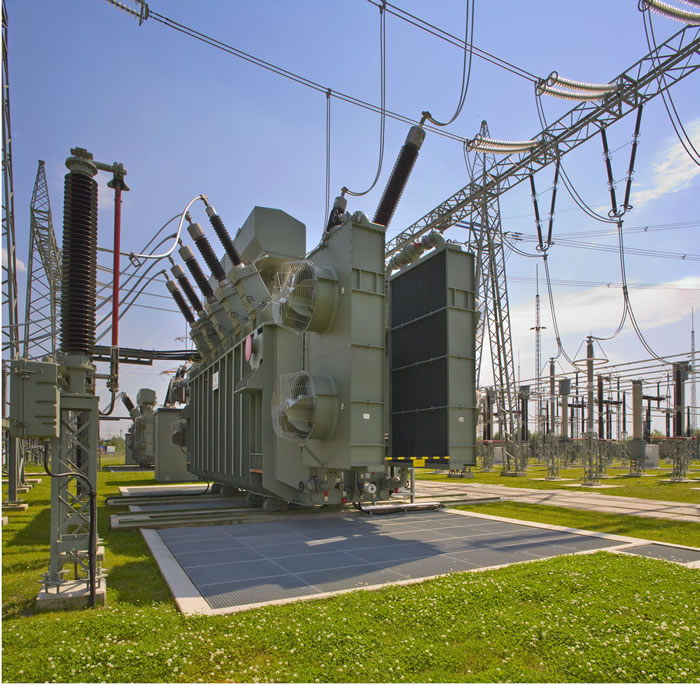Breakthroughs in the transmission and delivery of electrical energy over the years have come into place because of availability of power transformers. Power transformers date back to 1880 with commencement of the first distribution transformer 400KV high voltage electrical power system being put in place in the 1950’s.
According to Gregory Hollings from ABB in his article “A brief history of the power transformer”, most of the early installations were just local in the sense that they would just cater for sites that were just a few kilometers apart. Connections to consumers would just be in hundreds of volts but as time went by this increased as consumers needed more.
From the small steam and hydro generators, large power plants had to then be erected with an increase in voltage and to keep the current flow moderate and avoid loss of voltage, power transformers were invented.
One of the things that have never changed since the inception of the transformer is its basic physical principle. However, efficiency, density, weight and dimensions not forgetting the cost have all changed with time. Transformers are therefore very important when it comes to limiting the flow of current incase there is a short circuit to avoid accidents.
Emerging Trends for Power Transformers
Power transformers are very essential when it comes to the efficient and stable operation of electric power systems. While people still need these instruments, they need to get them at favorable prices while at the same time ensuring that they are reliable and updated.

George Osei the areas sales manager of Vekmar in Turkey noted that the industry is predominantly heavy capital equipments, which requires a considerable capital investment in its acquisition. In the short-run, investors and end-users make price their focus instead of quality. In the emerging future, consumers will mainly focus on the quality, which is the ideal investment considering the life-span of such quality investments against less quality with major focus on acquisition cost.
The transformers also have to be compatible with the environment which they are installed in.
When it comes to technology, various companies have ensured that certain aspects are put into place. Below are some of the things that are being improved on due to technology to ensure that the transformer works effectively.
The core and winding
The core and winding of the transformer are very important components because they determine the performance and reliability of the transformer. To help conserve these components and reduce energy loss, the core is now being manufactured using very thin material or material with high magnetic flux density. On the other hand, transposed conductors are being used on the winding for easy winding and help reduce man power used in the work.
Insulation
Insulation is also important especially when it come to the oil immersed transformers. Insulation can be done using either the insulation oil or oil-impregnated paper. Different analysis methods are then done on the transformer to see the effectiveness of the method used.
Checking the eddy current and stray load loss
Knowing how the stray load loss occurs is one of the things that is hard to calculate on the transformer despite the fact that the eddy current loss can be determined. However, things have changed over the years and this can be done as well through different analysis.
There are two tests that can be done to ensure that these two things are okay. These are basically the three dimensional magnetic field analyses and the measure against eddy-current and stray loss in the winding where a software is used to determine the best way for flow.
Cooling technology
The rate at which power transformers heat up due to transmission is sometimes high something which may cause a fault. However, things have changed and technology enables manufactures to ensure that things are in control when the transformer is functioning.
There is the use of a three dimensional supersonic wave Doppler flow velocity meter to help detect echoes and the use of zigzag oil flow to help improve on heat transfer from the winding to the oil. This helps create a balance in the winding temperature rise and decrease any high temperature that the transformer may incur.
Noise reduction technology
There are certain times when the transformer may produce so much noise when functioning. To help reduce these, experts advice that core sheets with small magnetostriction are used. Manufactures can also ensure that they improve on the corner joints of the core sheets.
This can be done by use of the step lap jointing in place of the conventional bat lap joint something which also helps in the reduction of the load loss and current loss. Soundproofing materials can also be put into consideration.
As technology improves over the years, there are many opportunities that come into place in the creation of better and reliable transformers. Individuals can be able to get transformers that are smaller in size yet have an increased overload capability. This is something which will be very effective in years to come because of their safe use in the environment.
According to Marianna Viola from the Sales Department of TES Transformer Electro Service s.r.l. in Italy, the renewable energy is one of the actors in the scenario of the power generation and transformers are necessary to allow the transmission directly from the source to the distributors, for them this means a demand of power transformers with smaller rating in terms of MVA and of voltage level but in higher quantity.

